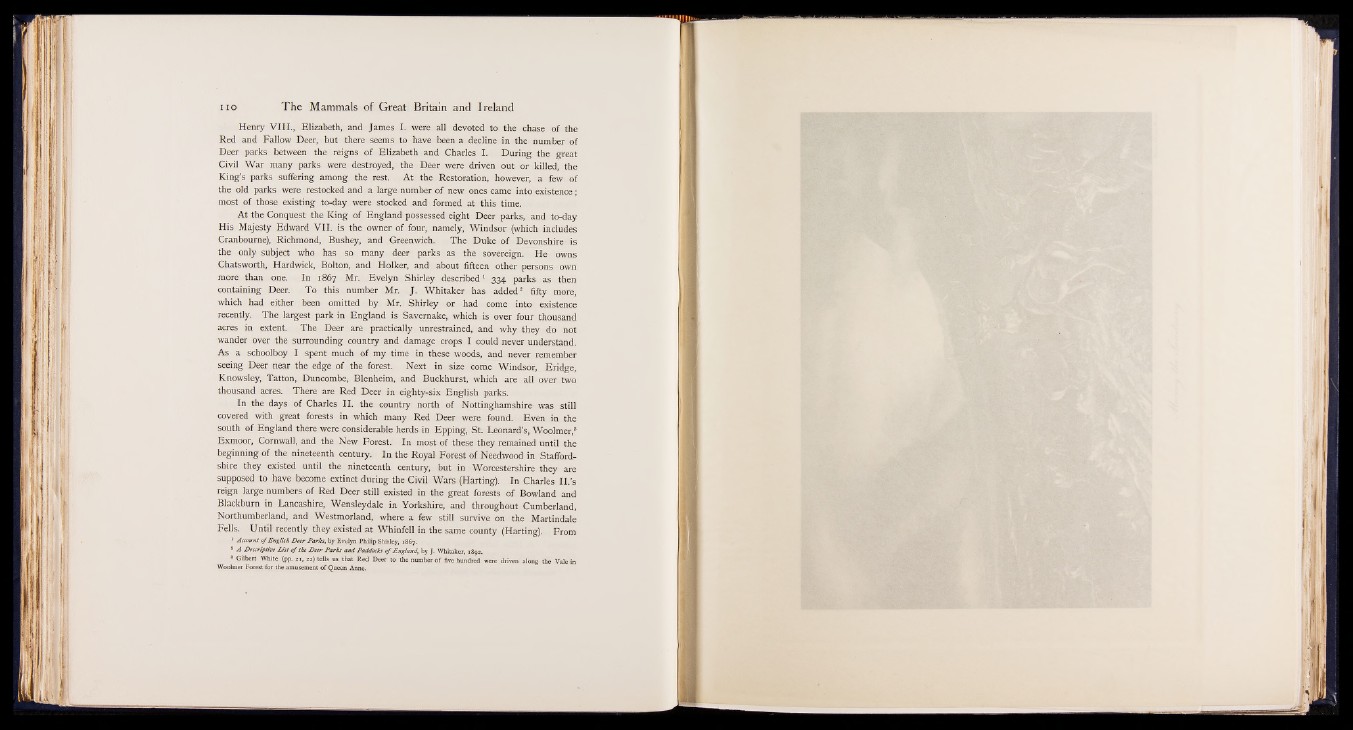
Henry VIII., Elizabeth, and James I. were all devoted to the chase of the
Red and Fallow Deer, but there seems to have been a decline in the number of
Deer parks between the reigns of Elizabeth and Charles I. During the great
Civil War many parks were destroyed, the Deer were driven out or killed, the
King’s parks suffering among the rest. At the Restoration, however, a few of
the old parks were restocked and a large number of new ones came into existence;
most of those existing to-day were stocked and formed at this time.
At the Conquest the King of England possessed eight Deer parks, and to-day
His Majesty Edward VII. is the owner of four, namely, Windsor (which includes
Cranbourne), Richmond, Bushey, and Greenwich. The Duke of Devonshire is
the only subject who has so many deer parks as the sovereign. He owns
Chatsworth, Hardwick, Bolton, and Holker, and about fifteen other persons own
more than one. In 1867 Mr. Evelyn Shirley described1 334 parks as then
containing Deer. To this number Mr. J. Whitaker has added2 fifty more,
which had either been omitted by Mr. Shirley or had come into existence
recently. The largest park in England is Savernake, which is over four thousand
acres in extent. The Deer are practically unrestrained, and why they do not
wander over the surrounding country and damage crops I could never understand.
As a schoolboy I spent much of my time in these woods, and never remember
seeing Deer near the edge of the forest. Next in size come Windsor, Eridge,
Knowsley, Tatton, Duncombe, Blenheim, and Buckhurst, which are all over two
thousand acres. There are Red Deer in eighty-six English parks.
In the days of Charles II. the country north of Nottinghamshire' was still
covered with great forests in which many Red Deer were found. Even in the
south of England there were considerable herds in Epping, St. Leonard’s, Woolmer,8
Exmoor, Cornwall, and the New Forest. In most of these they remained until the
beginning of the nineteenth century. In the Royal Forest of Needwood in Staffordshire
they existed until the nineteenth century, but in Worcestershire they are
supposed to have become extinct during the Civil Wars (Harting). In Charles II.’s
reign large numbers of Red Deer still existed in the great forests of Bowland and
Blackburn in Lancashire, Wensleydale in Yorkshire, and throughout Cumberland,
Northumberland, and Westmorland, where a few still survive on the Martindale
Fells. Until recently they existed at Whinfell in the same county (Harting). From
1 Account o f English Deer Parks, by Evelyn Philip Shirley, 1867.
2 A Descriptive L ist o f the Deer Parks and Paddocks o f England, by J. Whitaker, 1892.
8 Gilbert White (pp. 21, 22) tells us that Red Deer to the number of five hundred were driven along the Vale in
Woolmer Forest for the amusement of Queen Anne.